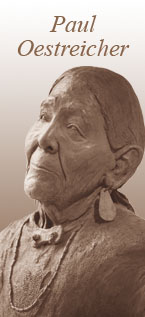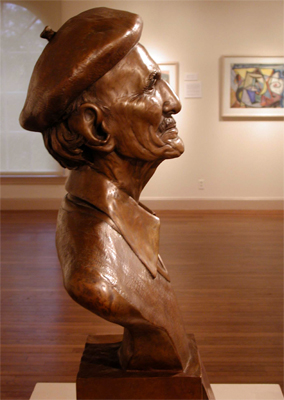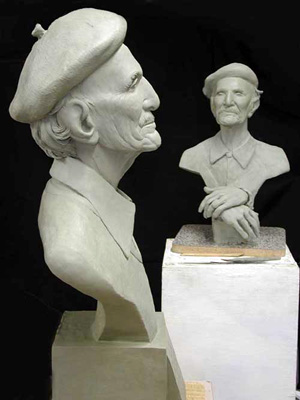| Alfred
Levitt (1894 - 2000)
Alfred Levitt was born in 1894 in a small town in Belarus. He remembers
privation, as well as anti-Semitic antagonism from neighbors and
officials. In 1911 his family fled to New York City, settling in
east Harlem.
As a young man Levitt received his first art training from the well-known
painter Robert Henri. Henri taught at the progressive Ferrer school
in Levitt's neighborhood. Through this school Levitt also met some
of the important leftist intellectuals of the period such as the
activist Emma Goldman, the journalist Leonard Abbott, the novelist
Jack London, and the historian Will Durant.
Levitt was too poor for college, but spent many an hour at the New
York Public Library, studying and reading widely. He taught himself
history, political science, and the history of art.
In the late 1930s Levitt studied painting at the Art Students League
and with Hans Hofmann, the most influential teacher of the generation.
During World War II Levitt produced cheerful beach scenes, but also
politically impassioned works such as anti-Nazi posters.
After the war Levitt, like such artists as Milton Avery, Stuart
Davis, and Adolph Gottlieb, spent the summers in Gloucester, Massachusetts,
painting its landscapes and fisherfolk.
Levitt's paintings were not in the vanguard style of the period,
abstract expressionism. This was a matter of choice on Levitt's
part. He was familiar with the new trend but preferred to move in
his own direction at his own pace.
In 1949-50 Levitt and his wife took the first of many trips to France,
living in the town of St. Rémy in Provence. He was attracted
to this area in part because Van Gogh had worked there. Levitt not
only visited museums and studied the natural landscape, but also
began a two-decade investigation of the prehistoric cave paintings
of sites like Lascaux.
Paintings of Levitt's were exhibited regularly at the Whitney Museum
of American Art and the Brooklyn Museum through the 1950s. In 1959
through 1962 he and his wife again lived in France, and Levitt founded
and taught at the School of Modern Painting in St. Rémy.
After this period he painted less and less, turning his energies
to his studies and lecturing on cave art. |






 The
finished clay version of "Alfred Levitt" (left) is shown
alongside the finished clay version of
The
finished clay version of "Alfred Levitt" (left) is shown
alongside the finished clay version of